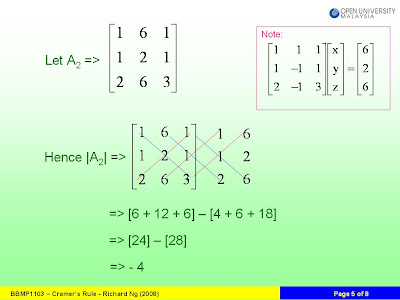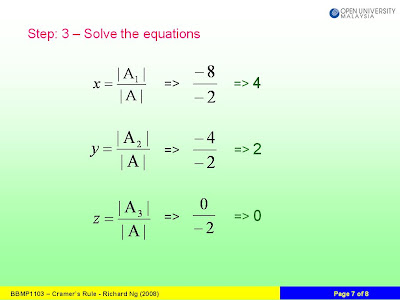


trigonometric identities solver



 From the time I learned about them, I've been fascinated (probably to an unseemly amount) by the square root. I remember reading about a method for calculating square roots by long hand. There's no point, really; we have calculators to do that for us. (If you have some spare time and you enjoy this sort of thing, see if you can figure out the algorithm from the example at left.)
From the time I learned about them, I've been fascinated (probably to an unseemly amount) by the square root. I remember reading about a method for calculating square roots by long hand. There's no point, really; we have calculators to do that for us. (If you have some spare time and you enjoy this sort of thing, see if you can figure out the algorithm from the example at left.)








The term algebra states the constants and variables in the equation. Algebra is one of the familiar topics in mathematics. Algebraic fraction is similar to the usual fraction but a difference is that the numerator and the denominator are algebraic expressions. Algebraic fraction simplifying is similar to that of algebraic fractions. Simplifying algebraic expressions is very easy and simple. In online, students can learn about algebraic expressions. In online, algebraic calculator is helpful to solve the given problem. In online calculator, when the denominator and numerator value is entered, calculator automatically simplifies the problem.
Example : Simplifying Algebraic Fractions
Simplify 3b/9b2.
Solution:
The given problem is an algebraic expression.,
3b = 3*b
9b2 9*b*b
Like terms gets cancelled,
On simplifying this,
Answer = 1/3b
Need More help with Algebra 1
libname k "c:\book";
proc gplot data = k.help (where=((female eq 1)
and (substance eq "alcohol")));
bubble cesd*age=i1 / bscale = radius bsize=60
bcolor=blue bfill=solid;
run;
load(url("http://www.math.smith.edu/sasr/datasets/savedfile"))
femalealc = subset(ds, female==1 & substance=="alcohol")
with(femalealc, symbols(age, cesd, circles=i1,
inches=1/5, bg="blue"))

#TigerWoods Cartoon - http://ow.ly/LnkD - #Ass Slap #Money Toss Call #Girls #SUNDAY
hk.lady.nextmedia.com
Loading Image...
率 å…ˆ ç‡ å¹³ 玩 æ–° ç³» adidas Essentials 上 月 Nike 以 æ¯" å¹³ 時 è²´ 二 至 三 å€ çš„ 定 價 , 推 出 時 è£ å'³ è¡Œ é çš„ ç¨ ç«‹ ç³» 列 NSW , éš ä¿‚ éš , 但 在 ç¶" æ¿Ÿ æ' æ°´ 這 個 市 é" 下 éš ä¹‹ 餘 , å¹³ æ‰ æ˜¯ é‡ é»ž 。 當 å„ å¤§ å" 牌 都 傳 出 縮 çš® cut budget 時 候 , adidas å 而 å† ä¸‹ 一 城 推 出 æ–° ç³» 列 Essentials , æ–° ç³» å"" 講 功 能 å"" åš ç¶" å…¸ , 玩 ç°¡ ç´„ 款 æ é®® 色 çš„ æ–° ç³» , 上 å¹´ 在 æ—¥ 本 å° è©¦ 牛 刀 推 出 實 é©— ç"¢ ...
#TAIWAN
12.13 #YouTube #VIDEO via @whatgtsmehot